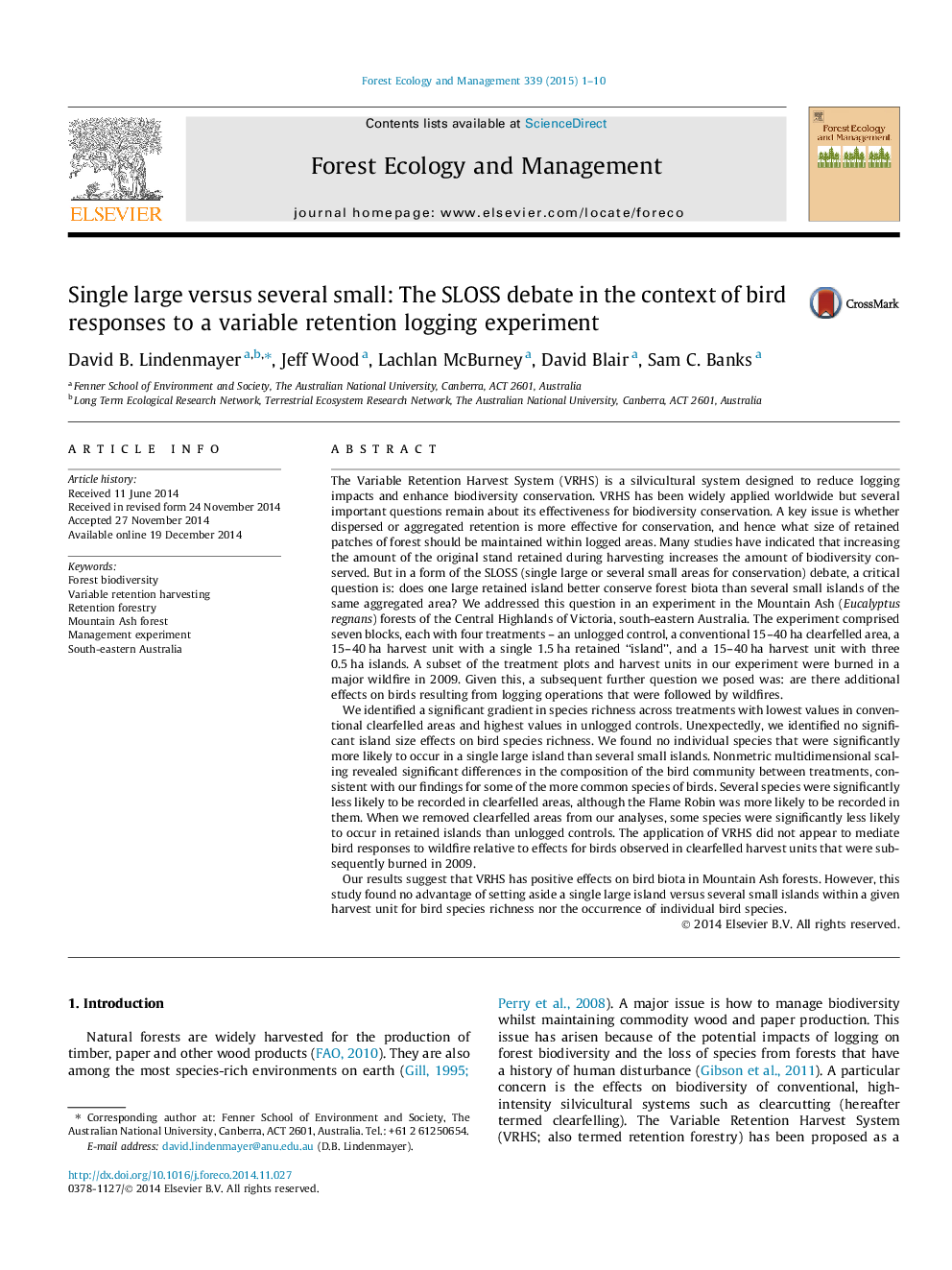| کد مقاله | کد نشریه | سال انتشار | مقاله انگلیسی | نسخه تمام متن |
|---|---|---|---|---|
| 86396 | 159184 | 2015 | 10 صفحه PDF | دانلود رایگان |

• We conducted a variable retention logging study to test island size effectiveness.
• There was a species richness gradient between clearfelled areas and unlogged controls.
• We identified no significant island size effects on bird species richness.
• We found no differences in bird occurrence between one large versus several small islands.
• Native birds respond positively to variable retention logging in our study system.
The Variable Retention Harvest System (VRHS) is a silvicultural system designed to reduce logging impacts and enhance biodiversity conservation. VRHS has been widely applied worldwide but several important questions remain about its effectiveness for biodiversity conservation. A key issue is whether dispersed or aggregated retention is more effective for conservation, and hence what size of retained patches of forest should be maintained within logged areas. Many studies have indicated that increasing the amount of the original stand retained during harvesting increases the amount of biodiversity conserved. But in a form of the SLOSS (single large or several small areas for conservation) debate, a critical question is: does one large retained island better conserve forest biota than several small islands of the same aggregated area? We addressed this question in an experiment in the Mountain Ash (Eucalyptus regnans) forests of the Central Highlands of Victoria, south-eastern Australia. The experiment comprised seven blocks, each with four treatments – an unlogged control, a conventional 15–40 ha clearfelled area, a 15–40 ha harvest unit with a single 1.5 ha retained “island”, and a 15–40 ha harvest unit with three 0.5 ha islands. A subset of the treatment plots and harvest units in our experiment were burned in a major wildfire in 2009. Given this, a subsequent further question we posed was: are there additional effects on birds resulting from logging operations that were followed by wildfires.We identified a significant gradient in species richness across treatments with lowest values in conventional clearfelled areas and highest values in unlogged controls. Unexpectedly, we identified no significant island size effects on bird species richness. We found no individual species that were significantly more likely to occur in a single large island than several small islands. Nonmetric multidimensional scaling revealed significant differences in the composition of the bird community between treatments, consistent with our findings for some of the more common species of birds. Several species were significantly less likely to be recorded in clearfelled areas, although the Flame Robin was more likely to be recorded in them. When we removed clearfelled areas from our analyses, some species were significantly less likely to occur in retained islands than unlogged controls. The application of VRHS did not appear to mediate bird responses to wildfire relative to effects for birds observed in clearfelled harvest units that were subsequently burned in 2009.Our results suggest that VRHS has positive effects on bird biota in Mountain Ash forests. However, this study found no advantage of setting aside a single large island versus several small islands within a given harvest unit for bird species richness nor the occurrence of individual bird species.
Journal: Forest Ecology and Management - Volume 339, 1 March 2015, Pages 1–10